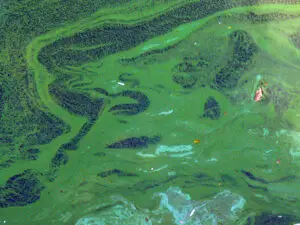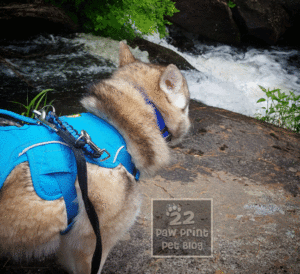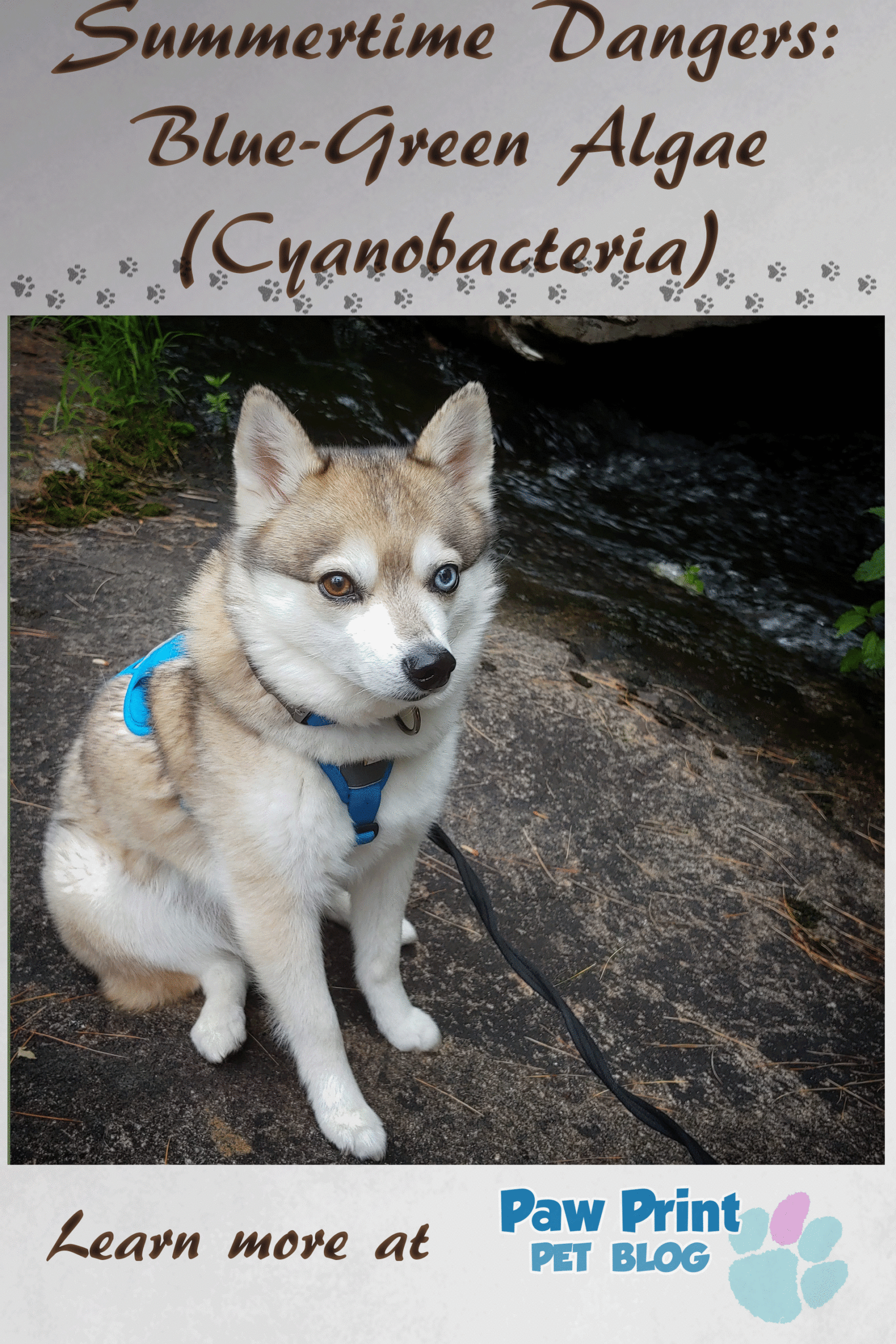Despite now living in the great north, we’ve had to deal with some pretty intensely hot temperatures this summer. Thanks, global warming. We don’t have air conditioning, so we’ve had to find other ways of keeping cool on hot summer days. Swimming, or otherwise spending time by the water, can be a fun way to keep cool with our dogs. No matter how hot it gets, however, no one wants to swim in mucky green water! Well, no human at least. I’ll bet quite a few dogs would dive, much to their owner’s chagrin, right into a pond full of nasty green muck. Why is it that so many dogs seem to enjoy playing in gross water outside, but yet despise baths? It’s important to be aware that, requiring a bath aside, blue-green algae can be dangerous for our dogs.
Post Contents:
Some types of algae are toxic!

Photo via Lamiot
Licensed under the Creative Commons Attribution-Share Alike 3.0
You might want to think twice before allowing your pet to play in water containing large amounts of algae, though. Besides the after effect of having to wrestle your furry friend into the bath tub, some types of algae are actually toxic, and can be fatal for dogs (as well as humans).
Cyanobacteria, more commonly known as blue-green algae, is a type of photosynthetic bacteria. Individual cyanobacteria cells cannot be seen by the naked eye, but when lots of the cells accumulate together it appears as a, for lack of a better term, muck. The color of the algae can range from different shades of greens and blues to browns and reds. It is sometimes described as looking like pea soup or paint, but can also appear in clumps that look more like foam or mats floating in the water.
But not all blue-green algae is toxic.
Keep in mind that not all blue-green algae is dangerous. Some algae blooms are quite harmless, so much so that they are used as ingredients in natural food coloring and in dietary supplements. However, it can be hard to distinguish between harmless and toxic algae blooms, and it’s not uncommon for natural blooms to contain a combination of toxic and non-toxic algae. Most experts recommend to steer clear of water containing large amounts of algae, just to be on the safe side.
Blue-green algae blooms occur most commonly in slow moving, fresh bodies of water.

Hopefully no blue-green algae here!
Especially during the warmer months, algae blooms can appear and spread rather quickly. Some cyanobacteria produce toxins (cyanotoxins) that are not only dangerous to humans, but to animals and plants as well. Cyanotoxins are some of the most powerful naturally produced toxins, and they have been known to cause symptoms ranging from mild irritation, to neurological complications and death.
There is currently no known antidote for cyanotoxins. Symptoms can begin as quickly as 15 minutes after exposure and can include more minor symptoms such as skin irritation, rashes, nose, throat, and eye irritation. More severe symptoms can include vomiting, diarrhea, liver damage, lethargy, difficulty breathing, lack of coordination, convolutions, and nervous system damage. Cyanotoxins can cause death, especially in smaller pets, sometimes as quickly as 30 minutes after exposure.
The best way to avoid cyanotoxin poisoning is to stay away from potentially contaminated waters.
Don’t let your dog play in, or drink water that contains algae blooms. If you believe your dog has been exposed, don’t allow your dog to lick him/herself until all the algae has been removed from his/her fur. Wash your pet as soon as possible. If you believe your pet may have ingested some of the algae, contact your vet. Your vet may recommend that you induce vomiting, or bring your pet in for supportive care.
Since, again, there is no known antidote for cyanotoxins, this is truly a case of prevention being the best medicine.






1 Comment
[…] hikes have the added benefit of often being closer to bodies of water! Just be careful to avoid blue-green algae if you allow your dog to play in, or drink from, bodies of water during […]